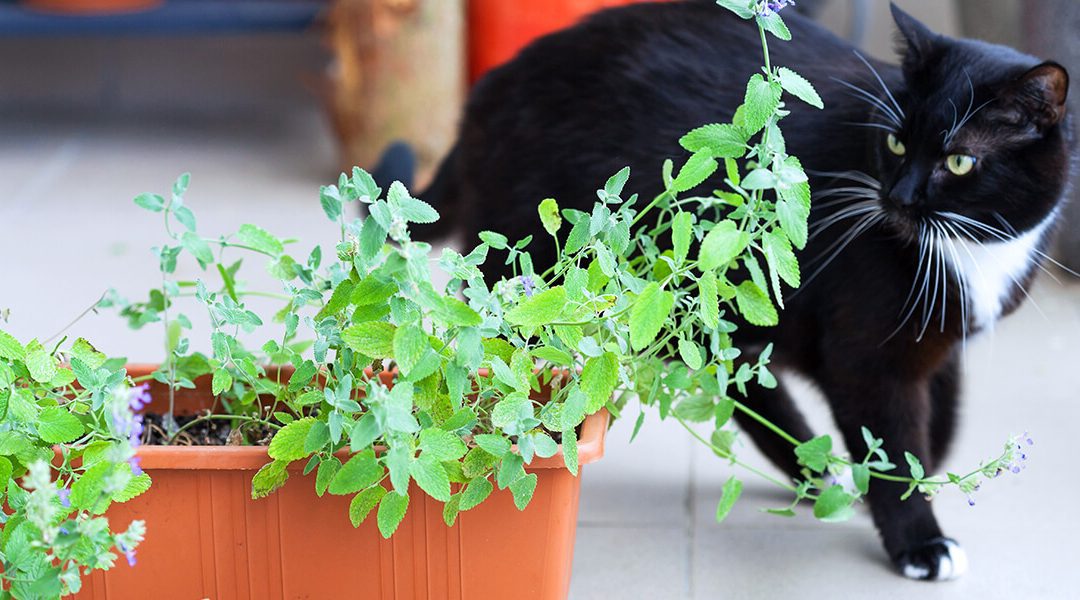Cats are no strangers to gardens. They’re some of the best natural pest controls around, most notably when it comes to mice. Perhaps it’s time to reward them for their efforts or maybe just to give your feline a special treat. A catnip planter is sure to make a buzz, both for your cat, the bees, and even your whole garden!
Catnip is a boon to the insect life of your garden. The pink flowers are highly attractive to bees, butterflies, and other pollinators.
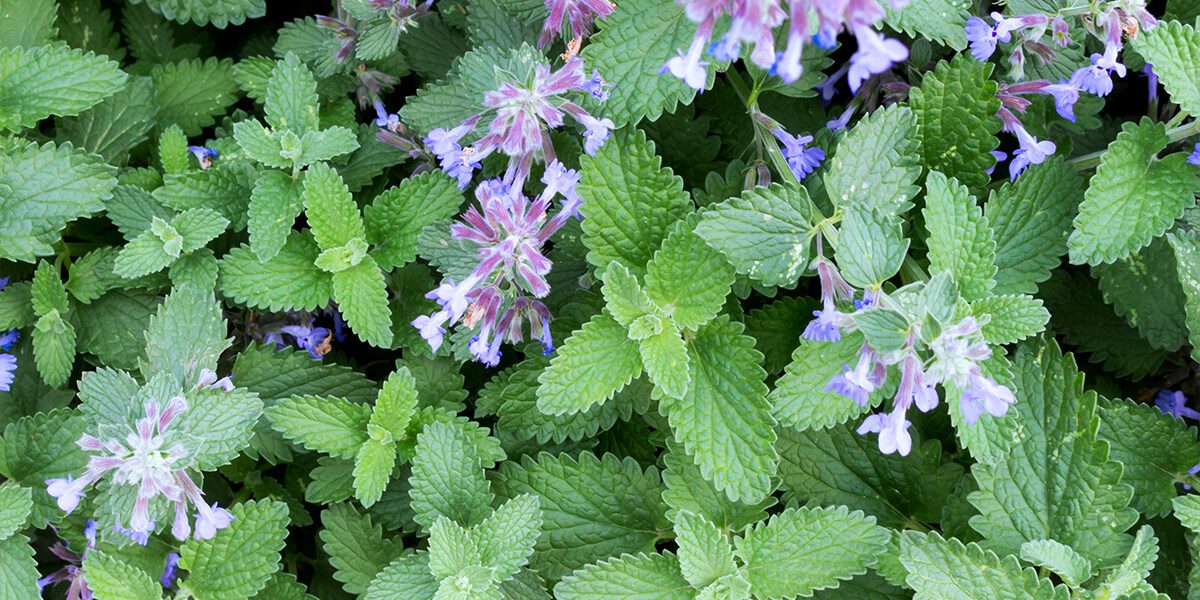
What Is Catnip?
Catnip (Nepata cataria) is a perennial herb in the mint family that has a special attraction for cats. When they inhale the essential oil, many cats get playful and revved up. If they ingest it, catnip usually has the opposite effect of mellowing them out. Not all cats exhibit this behavior, as catnip sensitivity is hereditary and only affects about 50% of cats.
Where to Grow Catnip
Catnip is easy to grow in the garden, sometimes too easy. Like other mints, it can spread where you don’t want it. Growing catnip in a planter is one way to contain it. Plus, a planter gives you more control over your cat’s access to the good stuff. You can clip off leaves when you want to treat your cat to some fun, or let kitty have access when she’s playing in the yard.
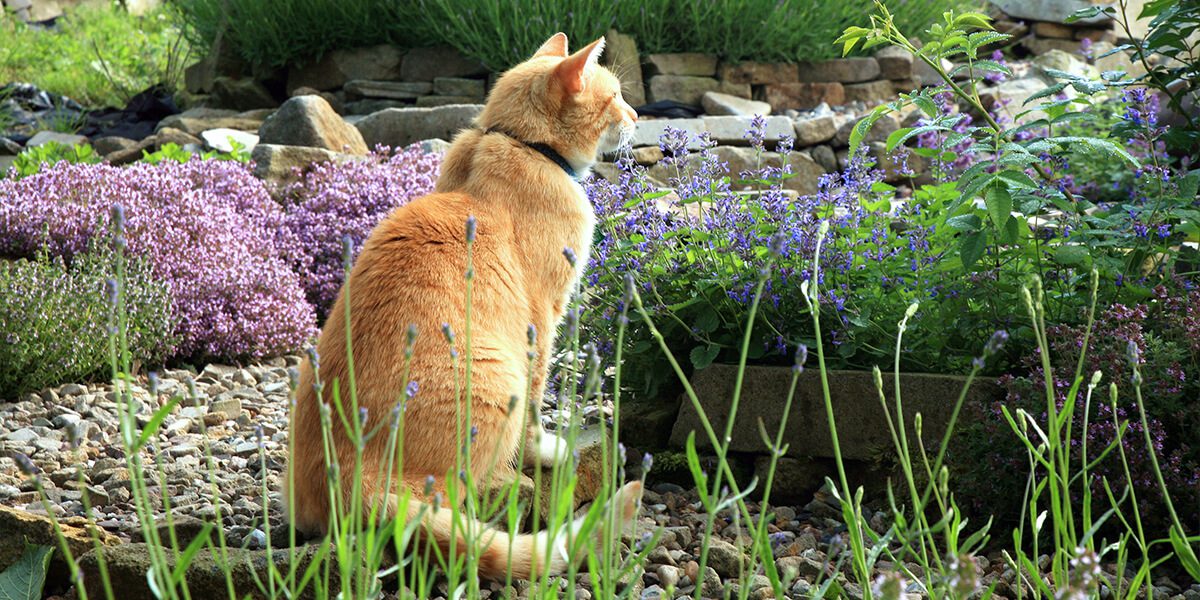
How to Start a Catnip Planter from Seed
Catnip can be started from seed anytime during the growing season, although it prefers to germinate in cooler spring or fall temperatures. In the heat of summer, keeping the catnip planter in a cool spot helps germination. It should sprout in 10-20 days. Alternatively, you can create your planter using starter plants, available from our greenhouse all year round!
How to Grow a Catnip Planter
Catnip thrives in full sun or partial shade. It does well in almost any soil, as long as it’s well-drained. When it comes to watering, be mindful not to overdo it. Let it dry out between waterings, then give it a nourishing soak.
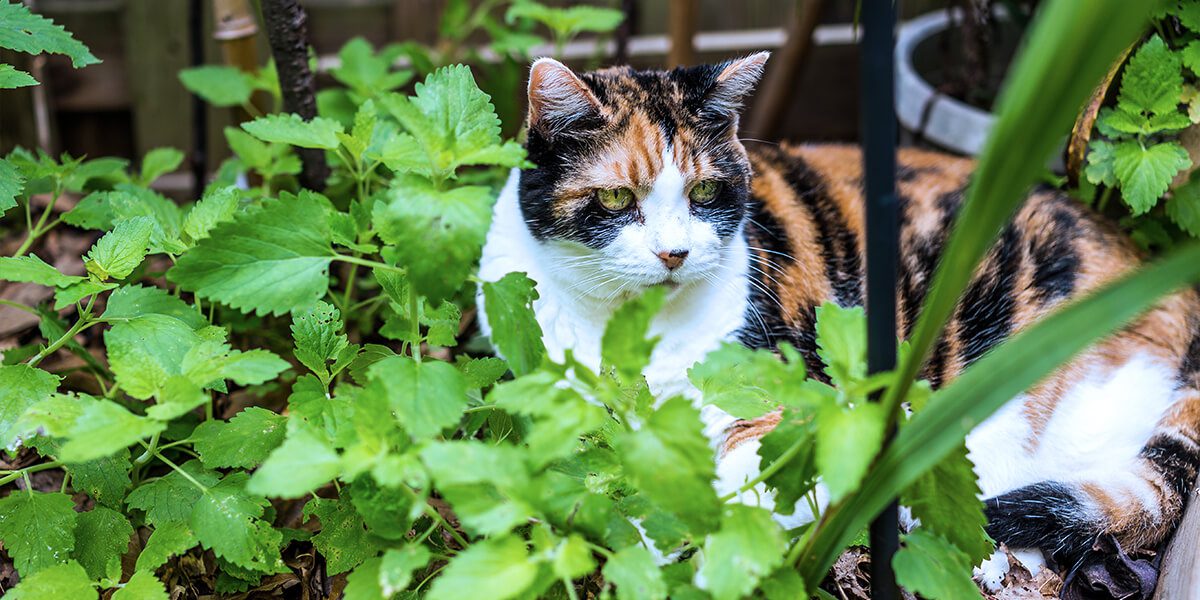
When to Harvest Catnip
Catnip can be harvested once the plants have five or six leaves on each stem. Pick a few leaves at a time or harvest a whole bunch at once to dry. Once the main bloom is over, you can cut it back, dry it as desired, and let it grow back for a second bloom. That will keep it growing in a tidy shape and replenish the plant with fresh leaves.
More Benefits of a DIY Catnip Planter
Catnip is a boon to the insect life of your garden. The pink flowers are highly attractive to bees, butterflies, and other pollinators. Plus, they attract lacewings, which are a beneficial predator and natural pest control. Lacewings feed on aphids, mealy bugs, leafhoppers, and white flies, among other pests.
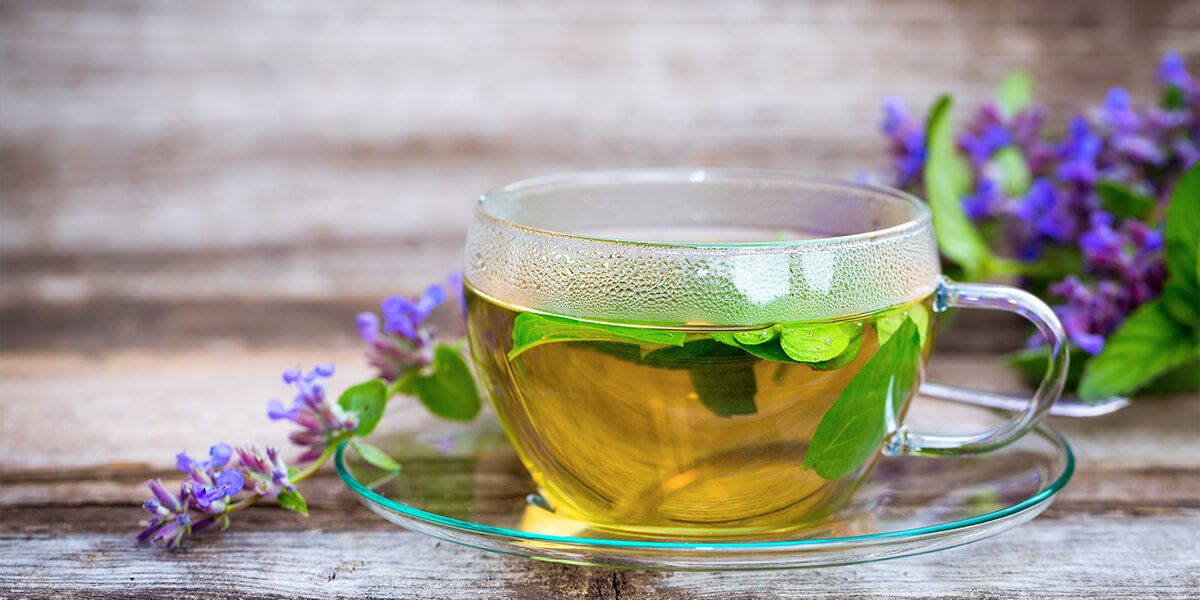
Medicinal Uses of Catnip
It’s not only your cat who can enjoy catnip, although for humans it has a decidedly less exciting effect. The leaves can be brewed into a relaxing tea that’s similar in effect to chamomile. Even the scent alone gives off a highly aromatic and relaxing odor. Just be careful not to attract too many cats into your garden.
How to Grow a DIY Catnip Planter Indoors
Growing catnip indoors is an easy DIY project as long as it receives enough sunlight and has well-draining soil. When it comes to watering, keep the planter on the dry side. The main challenge is to keep it away from the kitty. Growing it in a plastic container is a smart way to avoid a shattered pot, in case your feline does find it.
Other DIY Planters: Cat Grass
Besides frolicking in a patch of catnip, many cats also enjoy eating grass. Yep, although they generally stick to a carnivore diet, felines do graze a bit of grass now and again to help with digestion or to pass a furball. Growing a planter of oats, barley, rye or wheatgrass will give them something to chew on. And it may prevent them from finding fiber in your other houseplants!
For seeds, planters, soil, and all of your garden needs, visit our nurseries in Bloomingdale and Carpentersville!
Platt Hill Nursery is Chicago’s premier garden center and nursery.

